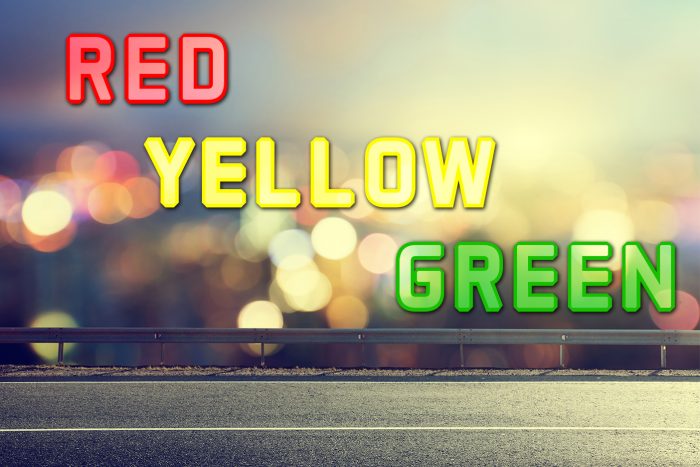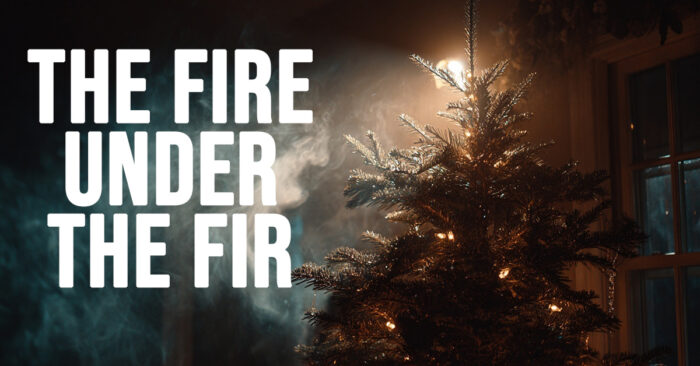Red, Yellow, Green

Red, Yellow, Green
Do you ever think about why things are the way they are?
Out of pure curiosity, what questions are you dying to know the answer to? Like, why is the sky blue? Why do bad things happen to good people? Why do our children have to be out of school in the summertime?
For me, I started pondering the meaning of the colors on traffic lights. How did we come up with red, yellow, and green to represent stop, slow, go?
Before there were traffic lights for cars, there were lights for trains. The earliest stop lights were gas-powered. The dangers of a gas-powered stoplight increase in the event of a leak. Trains needed indications to know whether to stop or not when the tracks intersected.
Red has always been a color that indicates danger. Even dating back to the 1830s, red meant “stop.” However, the original stop lights had a white light to indicate “go.” As you can imagine, the white lights became a problem. It was for train conductors to tell the difference between the white traffic light, and the stars in the night sky from a distance.
Furthermore, according to todayifoundout.com, a tragic incident occurred in 1914 that resulted in a collision between two trains. The “red” cover on the traffic light fell off, exposing the white light beneath. The train conductor took the white as meaning “go.” Following the incident, green was chosen to represent go, yellow for caution, and red remained the signal to stop.
Red means stop for more reasons than one. Not only does red indicate danger, but the color red also has the longest wavelength. For this reason, the color red can be seen from the longest distance. The wavelength of yellow is just shorter than that of red, and it is also easy to see from a far distance. This is why yellow was chosen to represent “yield.”
At one point in history, yellow meant “stop.” Yellow was used for stop signs before highly reflective material was developed to make the signs easier to see.
Did you know? In Japan, BLUE means go! Interestingly enough, centuries ago, the Japanese language only had words for four colors: blue, red, black, and white. Back then, to describe something green, you’d call it the Japanese word for blue. Japan uses the bluest shade of green for their traffic signals.
Stop Lights were designed specifically for our safety. Keep this in mind next time you are sitting at a red light. It is for your own utmost safety that traffic is regulated using these colored lights. This is just a reminder to please be safe at all intersections!
Do you have questions about your insurance? Find an insurance agent near you with our Agent Finder
Search All Blogs
Search All Blogs
Read More Blogs
The Fire Under the Fir: Insuring Against Christmas Tree Calamity and Holiday Fire Risk
Don’t let a dried-out tree ruin Christmas. Essential home insurance tips for fire safety, electrical risk, and candle liability during the holiday season.
Cozying Up: Embracing the Danish Art of Hygge for a Stress-Free December
Banish the December chaos! A simple guide to adopting Hygge—the Danish concept of cozy contentment—for a truly joyful holiday season.
Tinsel, Traffic, and Transactions: Insuring Your Business Against December’s Holiday Rush Risks
Don’t let the holiday rush expose your business. A guide to essential commercial insurance coverages for increased sales, foot traffic, and cyber threats in December.
The Ultimate December Gift: Why Life Insurance is the Most Important Present You’ll Ever Give
Forget the gadgets; life insurance is the real gift of security. A timely look at protecting your family’s future during the season of giving.
Skids, Slush, and Safety: How Your Auto Insurance Navigates the December Driving Nightmare
Essential auto insurance checks and tips for safe, claim-free driving through December’s challenging winter weather and holiday traffic.
Snowed In, Safely Covered: A December Guide to Home Insurance and Winter Preparedness
Don’t let winter woes ruin your holiday cheer. Essential tips on home insurance coverage for snow, ice, and festive accidents.
The Mindful Feast: Reclaiming Thanksgiving in a World of Distraction
Want a more peaceful Thanksgiving? Learn how to embrace a mindful approach and find true gratitude this year.
The New Entrepreneur’s Playbook: Insuring Your Business for Digital and Global Risks in 2026
Starting a digital-first business? Learn how to protect your enterprise from modern risks in 2026.
The Modern Parent’s Dilemma: Life Insurance for a Generation of Savers and Investors
Today’s parents have new financial goals. Here’s how life insurance can be a flexible tool for a modern family in 2026.
The Gig Economy Driver: Navigating Auto Insurance for Side Hustles in 2026
Driving for a gig app? Your personal auto insurance might not cover you. Learn how to get the right coverage in 2026.










